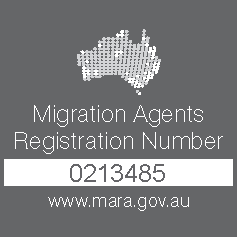In December 2019, the Senate established a Select Committee on Temporary Migration. The purpose of the inquiry was to report on the impact temporary migration has on the Australian economy, wages and jobs, social cohesion and workplace rights and conditions.
There were 40 recommendations in total. Dan Engles, Visa Solutions Australia’s Managing Director reviewed these recommendations. Upon review, it became clear that this inquiry strayed from the subject of temporary migration issues and could be in fact be viewed as a missed opportunity.
There are so many issues surrounding Australia’s temporary migration program yet none of these have been addressed in this report. This report could apply to anyone working in the Australian Labour Market whether they were on a visa or not.
Following is a list of recommendations that have some relevance to temporary migration along with Dan’s thoughts and feedback.
1. The committee recommends the Australian Government provide a significant increase in resources to the Department of Home Affairs to assist in the timely assessment of visa applications and that targets be set and published regarding acceptable assessment times for all visa subclasses.
Response: There are some things that the Department of Home Affairs can’t do anything about. It may be easy to employ more staff to process more visas but it’s not necessarily a lack of staff that is contributing to the visa processing wait times. Take for example the aged parent visas; currently there is a 20 year wait. This isn’t due to a lack of staff to process these visas; it’s comes down to the number of visas available versus the number of applications received. If demand is far exceeding supply, then an increase in resources won’t be of benefit.
2. It is recommended that the Australian Government further invest in the development of data collection, integration and dissemination capacity for agencies with responsibility for immigration policy settings and programs.
Response: This is already the case with the Department of Home Affairs and Fair Work, if this were to be expanded to incorporate other bodies it would be beneficial.
3. It is recommended that the Australian Government position the Seasonal Worker Program, in conjunction with the Pacific Labour Scheme, as the predominant source of low and semi-skilled labour in Australia’s agricultural industry.
Response: An agricultural visa has been introduced. While there haven’t been many details released as yet, this recommendation has been partly implemented already.
4. In keeping with the Seasonal Worker Program’s role as the predominant source of low and semi-skilled labour in Australia’s agricultural industry, it is recommended that the 88-day work requirement of the Working Holiday Maker program be abolished in respect to farm work and the Working Holiday Maker program be refocused on its original purpose of facilitating cultural exchange—not labour.
Response: This recommendation would be easier for everyone; however, whether it will get up and running is another thing as it applies to a significant amount of low-end labour such as hospitality and agriculture workers.
5. In order to facilitate an increased uptake of the Seasonal Worker Program by primary producers, it is recommended that reforms be made to the program that would lessen the administrative burden of participation without compromising on protection for workers.
Response: Participation in these programs is quite intensive for employers. A lot of farmers and other employers don’t want to be bogged down in copious amounts of red tape.
Simple and easy compliance in these programs would have the support of a lot of people.
6. To improve the flexibility of the Seasonal Worker Program, it’s recommended that the Australian Government trial a short-term stream of the Seasonal Worker Programs, allowing visa holders to engage in agriculture-specific work in Australia, with multi-entry capabilities, for periods of less than three to four months.
Response: This recommendation suggests that visa holders should have more flexibility to come and go without limitations. This would enable them to go home to see family and have a break before returning to re-commence work. From a policy perspective, it’s a great idea.
7. In instances where an employer engages a temporary visa worker, the employer be required to obtain accreditation from the Australian Government following the provision of training on their obligations to temporary visa workers and register with the Australian Government in cases where a temporary visa worker is engaged as an employee.
Response: This seems to reflect on the times when Australia had a training levy which they just got rid of. Training is an issue on its own and has nothing to do with immigration. While training Australians is a great idea it shouldn’t be expected to be done through the immigration program. Immigration and training are two separate issues.
8. It is recommended that the Australian Government emphasises the importance of the Skilling Australians Fund in supporting Australians to meet labour demands and that efforts should be made to increase industry awareness of the benefits of the Skilling Australians Fund to the Australian economy and community.
Response: Currently there’s no clarity as to where the Skilling Australians Fund proceeds are going. I’m a big fan of having these funds be directed to where they came from. If employers are being made to pay a fee for employing overseas workers, then surely the fee should be used to assist in making sure the system employing these overseas workers is functioning and the workers are getting some benefit out of it otherwise it might as will be another tax.
9. The committee recommends that all temporary visa holders travelling to Australia with permission to work be provided with an induction by the relevant industry groups and unions, an information pack by the Department of Home Affairs which explains their workplace rights and also be required to undertake training to ensure that they have a thorough understanding of these rights. Such visa holders should also be provided with details of where they can seek further information or assistance, including through non-government organisations such as industry groups, unions, settlement services organisations, and other like bodies.
Response: The information referred to here is currently available to Australian workers so why can’t this same information be made to foreign workers? Just because they hold a visa doesn’t mean they need a special program to go with it.
10. The committee recommends that the Australian Government monitor and review the impact of the 40-hour visa condition requirement for international students, in light of temporary measures to remove this requirement ensuring the primary purpose of a student visa must be study.
Response: If this suggestion works well then it is something the Government should look at removing permanently. The 40-hour fortnight visa condition is a restriction on the system.
11. The committee recommends restoring the alignment that used to exist between the temporary skilled and permanent skilled program to ensure that where appropriate, migrants have pathways to permanency and citizenship.
Response: I think all temporary residents should have some sort of pathway to permanent residence in Australia.
12. It is recommended for migrant workers, particularly women on temporary visas across Australia, an expansion of in-language and in-culture support and information on migration and family law in easy English and a range of languages be readily available.
Response: Nobody would have a problem with extending support services to migrants.
13. The committee recommends that employers be required to pay the wages of temporary visa holders into Australian bank accounts.
Response: There is no reason why a visa holder who holds an account in an overseas account can’t be paid into that account. There is no good reason why wages should go into an Australian bank account. It would make no difference to the employer. The process for depositing a wage into an overseas bank account is the same as that of an Australian bank account.
While this inquiry was meant to focus on temporary migration, a great deal of the report and the recommendations didn’t address any of the issues that would make an impact on the temporary migration program. Addressing the real issues where temporary migration is concerned would have been of great benefit.
If you would like to learn more about any aspect of migration, contact the Visa Solutions Australia team on 1800 828 008.
Travel Exemptions
While Australian borders are currently closed due to the COVID-19 pandemic, travel exemptions may apply under the following circumstances:
– A traveller has a compassionate or compelling reason to visit Australia
– Overseas workers holding a Subclass 482 or 400 visa are required to undertake a job in Australia that cannot be filled by a local employee
Visa Solutions Australia has been successful in acquiring a broad range of exemptions, from critical workers to those needing to travel on compassionate grounds.







